Japanese Dragon Hunt January 17, 2017
Author: Beach Combing | in : Modern
Beach has a busy day, so he offers this story up almost without comment. It would be fun to expand it though. Can anyone help with original sources, or at least ones nearer the fount: drbeachcombing At yahoo DOT com Thousands of peasants in the province Sessbu [in Japan] are engaged in a dragon hunt. […]
Medieval Marvels: Italian Dragonets August 20, 2016
Author: Beach Combing | in : Medieval
Beach recently ran across this legend in the work of the endlessly fascinating Gervase of Tilbury, an English writer with a penchant for the impossible or failing that the improbable. There is an island in Tuscany pertaining to the domain of Count Ildebrandino, in which there are winged snakes which look like dragons. As soon […]
Silly Crests May 7, 2016
Author: Beach Combing | in : Medieval
Beach has recently been looking lovingly through the various volumes of medieval armour and arms, particularly those of Guy Francis Laking (all online and all free if you have time and inclination). Particularly fascinating is the high silliness of the crests that were put on the top of the helmets. Above is perhaps the only […]
The Durham Serpent May 19, 2015
Author: Beach Combing | in : Modern
Here is a weird little story that allegedly appears in St Nicholas’ Parochial Register, Durham for 1568. Mdm. that a certain Italian brought into the cittie of Durham, the 11th day of June, in the yeare above sayd, a very great strange and monstrous serpent, in length sixteen feet, in quantitie and dimentions greater than a […]
Dangers of Treasure Hunting in Sixteenth-Century Devon April 12, 2015
Author: Beach Combing | in : Modern
Ancient mounds and barrows evoked mixed feelings in your average yokel in the medieval and modern period. On the one hand you, might find treasure: gold, silver and coins from the Empire or even before. On the other, though, you were likely to get flattened by whatever dragon or spirit guarded the hole in question: […]
Treasure Dragon Graffiti in Orkney July 4, 2014
Author: Beach Combing | in : Medieval, Prehistoric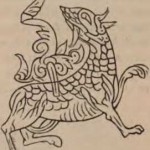
Maeshowe was a Megalithic tomb on Orkney. At some point our Viking ancestors broke in and desecrated the innards of Maeshowe with their tiresome graffiti. We have visited some of these graffiti before while in search of an axe. However, of special interest today is the treasure graffiti: translation Bruce Dickinson. It is true what […]
Dragons in Sixteenth-Century Devon? June 2, 2014
Author: Beach Combing | in : Medieval, Modern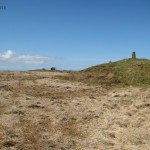
Challacombe is a small village to the west of Exmoor in Devon in the south-west of the UK. On the edge of the moor there are many ‘hillocks of earth and stones, cast up anciently in large quantity’, i.e. prehistoric burial mounds. So far so normal, this is a classic landscape in a marginal agricultural area, that […]
The Dragon of Dornoch? January 26, 2014
Author: Beach Combing | in : Medieval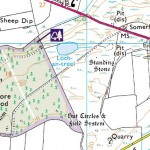
Dragons… It has been so long. The last dragon story of kinds was the serpent crown in the summer of 2012 and the last proper dragon tale was back in spring of 2012, a seventeenth-century Essex wyrm. Here, instead, is a fascinating but potentially dodgy source for a twelfth- or thirteenth-century dragon: a letter sent […]
Chinese Dragons Head West January 3, 2014
Author: Beach Combing | in : Medieval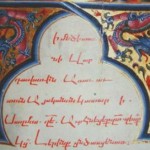
Dragons have long been part of the mythic corpus of Europe, Asia and Africa and, if you include the various Amerindian Giant Serpents, the Americas as well. However, different cultures celebrated or reviled dragons in different ways and a dragon from Sweden with a breath that reaked of ragnarok and a wingless dragon from China […]
The Crown of the Queen of Serpents July 21, 2012
Author: Beach Combing | in : Modern
A curious little episode from a very obscure English autobiography. The individual being described here is August de Haxthausen (obit 1866), friend of the brothers Grimm. De Haxthausen ended up in Britain in the 1840s in the house of a little girl, Janet Ross, who would become one of Beach’s favourite cookery book writers: but […]
The Monger-Goss Theory of Dragons and ABCs June 2, 2012
Author: Beach Combing | in : Actualite, Contemporary, Medieval, Modern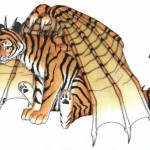
Just last week Beach was looking into dragon accounts from seventeenth century England. And in searching for dragon-related material he stumbled on an article that he feels deserves to be better known and perhaps celebrated. The article in question is George Monger’s ‘Dragons and Big Cats’ published in the illustrious journal of British myth and […]
Seventeenth-Century English Dragons May 28, 2012
Author: Beach Combing | in : Modern
Beachcombing recently highlighted the case of a giant serpent in nineteenth-century Devon, a snake that was as thick as a thigh. Beach had assumed that this was a one off, but now he is wondering as he found a second reference to go with it. This one comes from a pamphlet with a straight-to-the-point title: The […]
Dragon Rats in Oxford February 20, 2012
Author: Beach Combing | in : Modern
Beach has demonstrated an interest in dragons in this place on several occasions. He just recently came across an account though that trumped most of the shilly-shally he has put up here in the past. ‘Jacob Bobart botany professor of Oxford, did about forty years ago (in 1704) find a dead rat in the Physic […]
A Dragon in Medieval East Anglia September 16, 2011
Author: Beach Combing | in : Medieval
Beach had a fabulous evening trying to convince his elder daughter (3) that dragons do exist. This involved placing a small bean bag draco at various inaccessible points of the house and creating a domestic dragon mythology: dragons only eat salted foods; dragons hate men; dragon baby’s mothers steal keys etc etc. The picture above […]
Dragons in Swtizerland July 17, 2011
Author: Beach Combing | in : ModernDragons may be a thing of the past, but there are some surprisingly recent reports that seem to describe the fiery-breathed ones among us. Take this curious record from the works of Athanasius Kircher (obit 1680), Mundus subterraneus, quo universae denique naturae divitiae (Amsterdam 1664-1668). Where to even begin? In 1619 as I was contemplating […]


